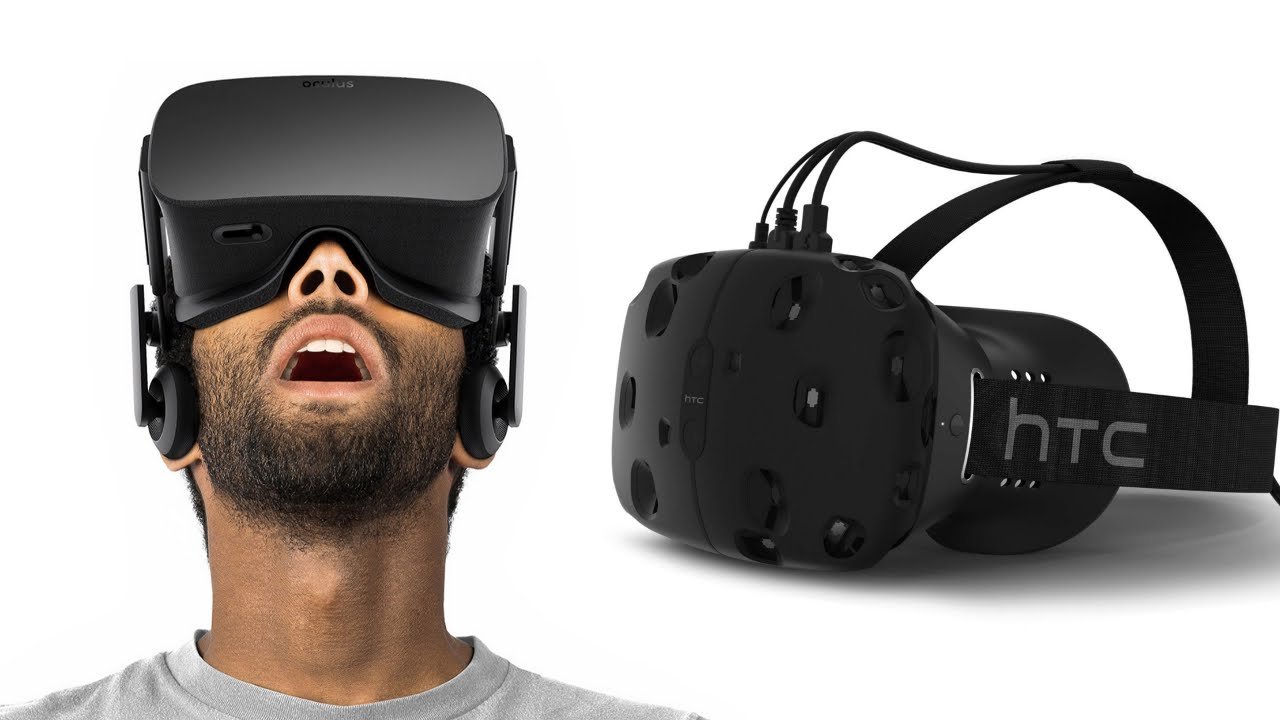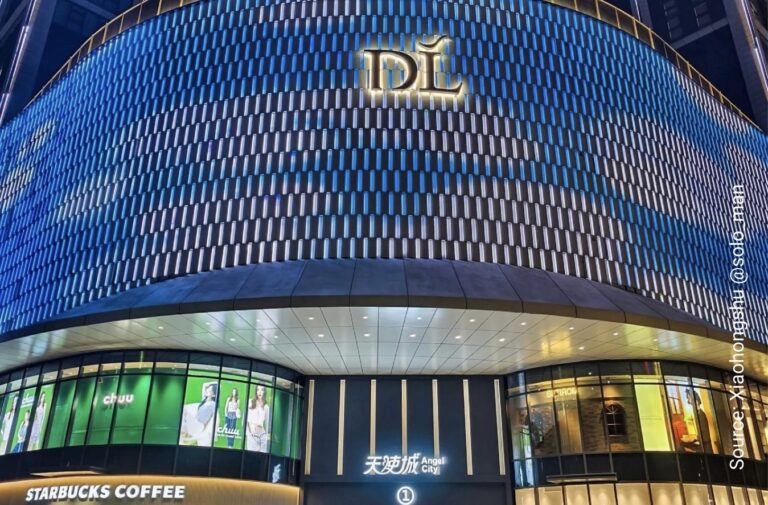The Chinese virtual reality industry is developing faster than anywhere else. Daxue Consulting estimates the Chinese market at 8.5 billion dollars in 2025. In comparison, in 2016, it accounted for about 860 million dollars. Virtual reality (VR), though existing for decades, now enters whole new dimensions of insights in various industries.
Virtual reality had been used already for years in different areas, such as the military, entertainment industry (e.g. gaming), education and training (e.g. pilots), or healthcare (e.g. VR therapy) to name a few examples. Nowadays, however, and particularly in China, it is strongly used in the business sector, facilitating companies to overcome the difficulties of design decisions to make, touchpoints to establish, or to showcase their products and services. For instance, virtual merchandising allows Chinese consumers to wear virtual reality headsets to shop. One of Chinas biggest e-commerce companies, Alibaba (阿里巴巴), demonstrates the phenomenon of enhancing the online shopping experience by VR with Alibaba’s Buy+: Watch the Video CNN.
Additionally, the advanced technology opens a whole new world to marketers and market research companies such as Daxue Consulting, to maximize the shopper journey and thus, the customer experience.
The approach comprises areas like
- PDD (product design & development), packaging design, POS communication
- Store and shelf layout, category testing
- Automotive Design, Real Estate, Interior Design
- Tourism, Activities
- Shops, Resorts
- Click here to find out more about it
What differentiates China from the West
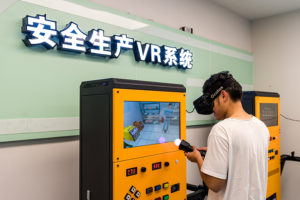
Source: Beijing Review
China, the world’s largest economic driver, embraces new technologies more than the western counterpart. Chinese already employ virtual reality in business applications which may result from the fact that Chinese are considered as early adopters, they have a healthy appetite for trying out new experiences. Also, in China, several virtual reality experience zones are already existing. Massive investments in Chinas VR ecosystems take place from both, national and foreign players. Also, the government is involved supporting the virtual reality technology as President Xi Jinping (习近平) seeks to strengthen innovation. Matthieu David, CEO and founder of Daxue Consulting, adds: “Another important aspect to consider is the fact that consumer behavior in China is changing very fast, VR is, therefore, a good option to avoid too many expenses.”
VR/AR Research in China: How to make the impossible possible
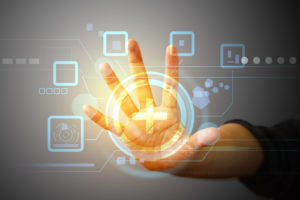
Source: Engadget
Exposing potential consumers to a computer-simulated environment (such as the POS), creates brand new possibilities in market research and consequently for businesses who make use of it. Virtual reality allows testing anywhere (virtual places), everything (virtual products), and with anyone in a controlled environment.
With the appropriate equipment (such as a suitable headset with earphones, controller, software and a testing room) plus an experienced team, it is simple to upload your content – such as your planogram (POG) – and the experiment can begin. The participant will hear the sounds which would be typical in the natural environment and will be able, for closer examination, to inspect the virtual package through a magnifying lens and even the experience of unwrapping the virtual product is possible.
By employing a moderator for those sessions and supporting the virtual reality experience with additional research components such as qualitative interviews, the consulting team can directly ask for e.g. the reason or an explanation of deciding for a particular element, while the participants are still in the virtual world speaking out aloud their thoughts.
Eye-tracking and the movement data of the VR-glasses produce heat maps which allow checking on which elements the consumers focus, what attracts them and what not. Through hand-controller-tracking, the researchers can gain insight which products the participants take, e.g. out of the shelf. Additionally, it allows recording for how long and which sides of the product the attendants examined and finally, if they decided to purchase it and put it in the virtual shopping cart, or if they placed it back on the shelf.
Moreover, the data is recorded and additionally available in real-time. Therefore, it not only enables collaborations with whoever you want to share the data: teams of designers, developer, or even supplier or retailer but also ensures the precise analysis of the different influences afterward using specific software.
As several users can access the same virtual place at the same time, it is even possible to interact with each other as being in the same room – a concept called social presence. Thus, opening new doors in operating your business: even virtual handshakes are possible!
What to be aware of when opting for VR/AR research in China instead of traditional research methods?
The question arises if the outcome with virtual reality compared to conventional research makes any difference in the behavior patterns of the participants. According to a GFK survey, conducted on a 7 point-scale, the top two boxes – agreeing that virtual interactions with people and places can be as good as being there in person – reached 27 per cent of Chinese, whereas only 6 percent disagreed according to the bottom two boxes.
Authentic situations arising through the virtual reality helps the research team providing a more precise behavior study as the participants will be driven more by the subconscious mind. Comparing the method with focus groups, for instance, where attendants perform more of a recalled self-report than spontaneous or automatic reactions, the immersive character of virtual reality intensifies the accuracy of results.
However, one cannot assume that VR/AR research in China will replace all conventional research techniques, but it may revolutionize some and augment and support others soon.
VR research is (yet) a non-haptic approach, the simulation of weight, or how the product feels in reality, is left behind in virtual reality research. Also, by now only limited content is available. However, the tools to build customized content are rapidly developing. Another risk coming with the system is the UX (User Experience) of the participants with the technology itself.
The need of gaining insight of how to visually design the product or how to create its features based on the knowledge of how consumers are interacting with the product, or how the surroundings might influence purchase decisions, is the right choice to utilize VR research. Therefore, it is of great importance, that the consultant team knows the clients’ objectives before opting for this technology.
Learn from your wrong business decisions in the virtual world
Nevertheless, applying VR research for the right reasons, the benefits arising from this technology are notably impressing. Through VR research, a whole new world of possibilities is emerging by creating and testing your individual virtual rooms and products. A significant advantage arises for those, who needed to test in the real environment.

Source: King’s College London
VR research will save an enormous amount of money as it keeps you away from difficulties arising from real-store-testing and risks of loss in sales by applying the wrong POS communication, for instance. Another advantage is to have total control over every aspect of the environment, such as visual and auditory stimuli. Furthermore, the technology allows to being more flexible, as it is possible to present an infinite variety of different models without having the development or production costs.
Physical prototypes are not needed anymore as now virtual reality designs your tailor-made product models where you can quickly adapt changes. For instance, even food studies can be executed through virtual buffets. Matthieu David explains: “It is possible to easily modify the color, the packaging, or the feature of a product to analyze the perception from a customer point of view and save furthermore investment costs which would arise by developing the real product.” Therefore, VR research is a sustainable method to uncover advantages and disadvantages before the actual production which saves the use of valuable resources and ensures a successful product launch.
Moreover, by having a true-to-life environment while testing, the method triggers a higher engagement of participants and thus has a positive effect on the research results to be more reliable. Besides, virtual reality research allows recording and real-time transmission which enables on the one hand to analyze key shopper behavior such as gaze tracking and on the other hand to share insights to your stakeholders of how customers interact with your digital products.
Did you know the difference? VR, AR, MR in short
- Virtual Reality (VR) lets you dive completely into ‘foreign’ world through VR-glasses producing a stereoscopic view. The virtual world is separate from the ‘real’ one, which means the physical world is therefore not relevant to the viewer.
- Augmented Reality (AR) is the real world amplified with virtual elements, which overlay the natural field of vision such as the lamp on the image below at the office of Daxue Consulting
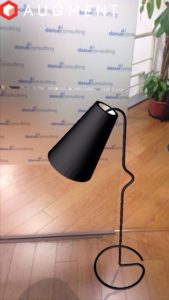
Augmented Reality extends your reach. It goes beyond what you see with your normal eyesight. Thus, in the future, it will increase the economic value substantially. Imagine, for instance, a restaurant at a remote place, they don’t have to be on the road to be seen; AR makes it possible to make customers aware of it including information such as prices or the menu and could furthermore even direct you to this place”, says Matthieu David.
- Mixed Reality (MR) is a combination of the two types mentioned above. The biggest difference to augmented reality is the proportion of real to virtual elements. The dominant part of AR is the real world, not the virtual elements, whereas within MR the principal part is the virtual elements, with the reality still being an important component. People and objects from the physical world merge with the virtual environment.
The HoloLens device by Microsoft, for instance, enables you to interact with holograms in the world around you, a business and professionally oriented device:
What the real future brings, still needs to be seen. However, the possibilities emerging through continuously developing technology towards the virtual world – no matter which sector – education, entertainment, business, and more – are breathtaking.
Be one step ahead with the VR research solutions Daxue Consulting offers
Daxue Consulting has a strong background and expertise in research, thus provides you with the most accurate market studies. As our dedicated team loves technology, it embraces the new options of VR/AR research in China allowing them to deliver even more reliable results. By utilizing the service of Daxue Consulting, you will discover a perfect combination of conventional market research with the latest technologies. Thus, you finally will be able to overcome difficulties in design decisions, establish the right touchpoints, and act more cost-efficient.
To know more about VR/AR research in China, contact our dedicated project managers by email at dx@daxueconsulting.com


